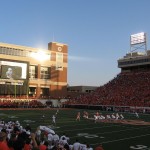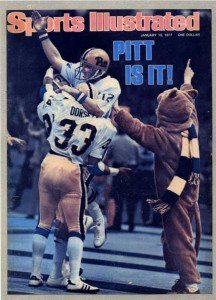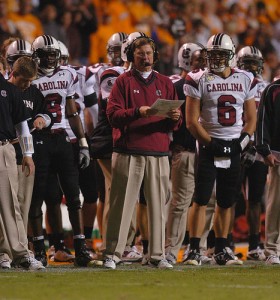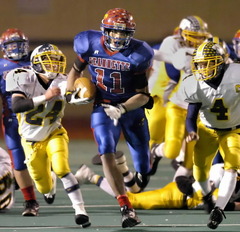
A friend of mine recently emailed me about the Oklahoma State scandals that are breaking. With his permission, I’m publishing his missive and then my response.
So what are your thoughts on this whole Ok State issue? So far I haven’t read anywhere that the NCAA is even looking into it, which is laughable in my opinion (if these allegations are true). That being said the NCAA’s outdated and draconian practices for meting out punishments is absurd at best. I’m sorry but punishing the current athletes and students for things that people that aren’t even with the university anymore did is just wrong on so many levels. There has to be a better system in place or at the very least, a way to punish those responsible. I just see what has happened at PSU as a wakeup call because the people who were responsible for the horrific actions that took place are either in jail or about to have their day in court, so why then, are the current players and coaches being penalized for things that happened when they weren’t even at the university. I guess what I’m getting at is the currently players/ coaches at Ok State should not have to deal with the possibility of the death penalty when they weren’t even there for when the alleged pay for play was happening. Just curious to hear your thoughts on this.
Here’s my response:
To your question, it may not seem fair that current players at PSU or Okie State would seem to be punished for things they didn’t do. If Okie State is punished in any tangible way, its players should be allowed to transfer immediately without sitting out just as PSU’s players were allowed to do.
However, justice cannot be tempered because of collateral effects. It does matter at the institutional level. We don’t fail to prosecute rule-breaking institutions in the ‘real world’ because of downstream effects. Enron shouldn’t have escaped punishment because its lower level employees and/or its employees’ families, who had no knowledge of its illegal activities, would’ve been adversely affected. Okie State football, as an institution, fostered an environment that led to these transgressions.
Yes, they can try to punish the individuals responsible (primarily Les Miles, I guess). But the idea here is also to punish the institution so that it doesn’t get lax about controls in the future. If Okie State (or SMU back in the 1980’s) isn’t punished because it would negatively affect current players and administration, it sends the message that they can do almost anything they want. If Miles was still at Okie State, they could just fire him and disassociate from some boosters and keep on making payments to players. The lesson would be just don’t get caught! I would be ok with punishing Les Miles (via suspension or a show-cause penalty), but that hurts LSU football, which as an institution hasn’t done anything wrong that we know of, and its current players who are even further removed from the Okie State scandal. The Okie State football institution still has to learn a lesson.![By Bradford J (Flickr) [CC-BY-SA-2.0 (http://creativecommons.org/licenses/by-sa/2.0)], via Wikimedia Commons Texas vs. Oklahoma State at Boone Pickens Stadium, Stillwater, Oklahoma.](http://www.jollybengali.net/theconfluence/wp-content/uploads/2013/09/Texas_at_OSU_2007.jpg)


